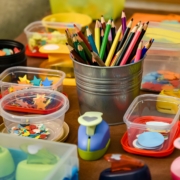CVS and the Paradox of Do-It-Myself Vs. Do-It-For-Me
There is a powerful conflict raging in brand management. This conflict reflects how brands define customer service. The conflict is a paradox that most brands have not yet solved: it is the paradox of DIM vs. DIFM: Do-It-Myself vs. Do-It-For-Me. At its heart, the DIM vs. DIFM paradox is about customer control.
Technology, apps, mobility, digitalization, robotics, constant contact, 24/7-time spans and artificial intelligence create everyday customer control issues. For years, data showed that customers are willing to cede control for increased personalization of services.
Kiosks, voice-activated applications, digital wallets, conversing bots, self-tracking of physical and mental functions (the quantitative self), driverless cars, connected cars, connected-smart appliances in the connected-smart home – all of these shift accountability of actions to things other than ourselves, changing our perceptions of what we can accomplish. We may set the parameters, but the operations are no longer ours.
However, we expect the technology to deliver outcomes just the way we want. Wearables track our movements, sleep, health, etc., yet, we set our own goals expecting the wearable to participate in helping us to deliver against our personal strategy.
Robotics and AI (supposedly) make our choosing and using easier. But, can robots or AI deliver humanized ease of mind? What happens when you take the person out of personal? What happens when we take the self out of self-service?
We appreciate the convenience benefits of the digital world. However, we desire the experience of human contact. In an increasingly digital world, we seek person-to-person contact. Of course, each cohort perceives self-control and the relationship of man and machine differently. One challenge for brands is to maximize each customer’s desire for being in control while in many cases not being the controller. In the battle for the soul of control, the best brand experiences will be the optimization of DIM and DIFM: control delivered my way, regardless of who or what is in control.
To understand how at odds are these two sides of branded customer service look no farther than CVS and your local grocery store.
The chief digital, data, analytics and technology officer at CVS, Tilak Mandadi, spoke with The Wall Street Journal about the future of the CVS customer experience. Mr. Mandadi stated that CVS research indicates customers want “accurate real-time status of their order, wanting to know where is their prescription and when that prescription will be filled.“ So, CVS is building a new self-service app. This new CVS app will employ “conversational AI” using natural language. Mr. Mandadi believes the conversational app will be able to answer most customer questions. And, this new self-service will not include “annoying menu-based options such as press 1 for this and press 2 for this, etc.”
In real life, pharmacies are struggling. Profits are at risk. For example, Walgreen’s is closing stores. Walgreen’s dismal reporting to analysts detailed the challenges facing drug stores. Walgreen’s says that its store closings will not entail firing employees, just reassignments. On the other hand, CVS “cut costs and thousands of jobs” according to The Wall Street Journal. Pharmacies including CVS say they are committed to staffing stores but there have been complaints and mistakes. The Wall Street Journal indicates that there are reports of overworked staff and “dangerous” order-filling errors.
Self-service, according to CVS, will place some of the pharma responsibility onto the shoulders of the customer while reducing the need for pharmacists to attend to phone calls. The tacit understanding seems to be that there will be less need for extra personnel.
The CVS app will also test how much trust customers will invest in the CVS brand. After all, this is our personal health and wellness. Pharmaceuticals go beyond aches and pains to life and death. AI, conversational or not, takes the human out of experiences, especially service. Who or what do we trust?
Trust is at the heart of all relationships. Can customers trust voicing their feelings, fears and their human interactions to AI? Is trustworthiness related to degree of technology or to depth of human service? Can trust be digitized? Can pharmacy services be trusted if it is an algorithm? Or an inanimate conversationalist? Is CVS having these discussions?
Trust is earned, not given. Customers must trust the technology to deliver the promised brand experience in a quality manner. Customers must trust the machine to perform the task and without depersonalizing and dehumanizing the task. Doubt damages trust. Damaged trust destroys brand value.
Another challenge for brands is whether trust can be de-humanized. To what degree? Brands must determine how much is technology and how much is human. Then, ensure quality delivery of both. There are going to be areas where human autonomy is needed. Can the app know when to turn the conversation over to a real person?
There is a definition of service as “a set of one-time consumable and perishable benefits. It relies on the human connection aspects of a relationship.” But, the CVS app is allocating the services to a non-sentient operation. Helpful assistance makes life easier. But, each brand experience requires different levels of technological integration. Sometimes it is necessary to have a human on the other end.
Digest this CVS story along with another story from The Wall Street Journal about the issues surrounding self-service check-out in grocery stores. Self-service check-out in grocery has not turned out to be the panacea grocery store owners envisioned. Many stores are eliminating their self-service kiosks. Even Amazon has stepped back from its people-less, smart-cart stores. Amazon’s lesson is described as not grasping the desire for human interaction in the supermarket.
Regarding self-checkout, as with all technology, there are always glitches. This necessitates an employee standing by for assistance. There is theft. Just like the behaviors on National Geographic’s How To Catch A Smuggler, self-service check-out seems to attract those with sneaking and cheating behaviors where certain items can be manipulated to lower prices on larger items. California has a new proposition ready for a vote that would post one employee for every two self-check-out registers. The only function for these employees is to assist customers and, hopefully, spot the sneaky ones. Self-checkout is supposed to be an efficiency provider: fewer employees at registers. Now, those employees are still on payroll, just doing a different job.
As for customers, only 26% of shoppers over 60 like self-service check-out. Under 45 year olds are most likely to approve of self-service, with a little more than half of the under 45-year olds saying the preferred self-service. As with everything, age matters. Brands need to find ways in which to satisfy customers of different cohorts without trespassing on the brand’s core reason for being.
Furthermore, new data in an article in Harvard Business Review reveal that for office personnel AI can make office workers feel lonelier and less healthy. Is there a possibility that grocery and pharmacy customers, looking for assistance and solace will feel the same way as office workers from frequent interactions with a conversational bot? Will cashiers and other grocery staff start to feel lonely?
So, with contradictory needs of Do-It-Myself and Do-It-For-Me, what happens with brands like CVS? All brands must continue to build and nurture a strong, adaptable, flexible intelligent and empathetic corporate culture. Digitized does not mean dehumanized. Yet, the technological changes in the workplace should not allow a dehumanized personal experience. CVS may be treading a fine line. Brands must determine by customer set where the line is between machine and me.
At the same time, brands must deploy self-service and control within the framework of their mainspring fundamental ethos. Don’t allow technology to impinge upon the brand’s core essence and reason for being. As the executive vice president and chief information and technology officer at CarMax told a Deloitte interviewer, “We’ve done a lot of cool things through machine learning and AI. I’m now focused on ensuring that whatever we deploy as a company is being used responsibly and in ways consistent with our core values.”






